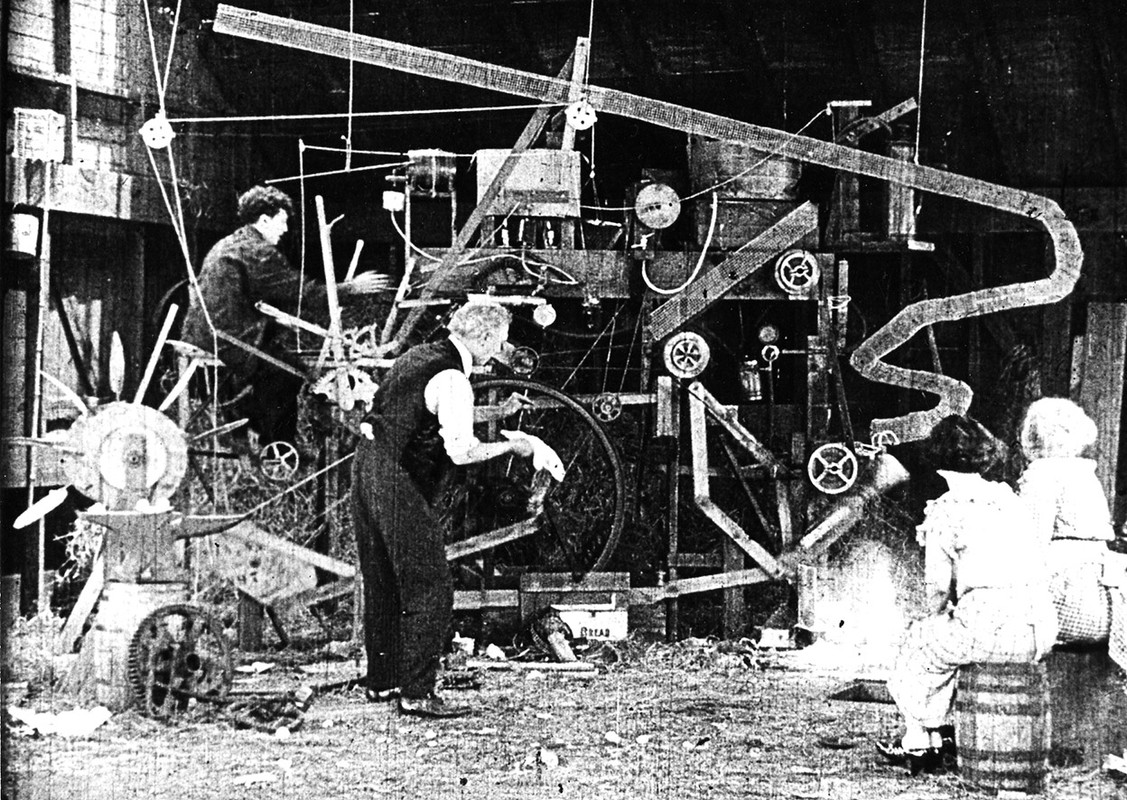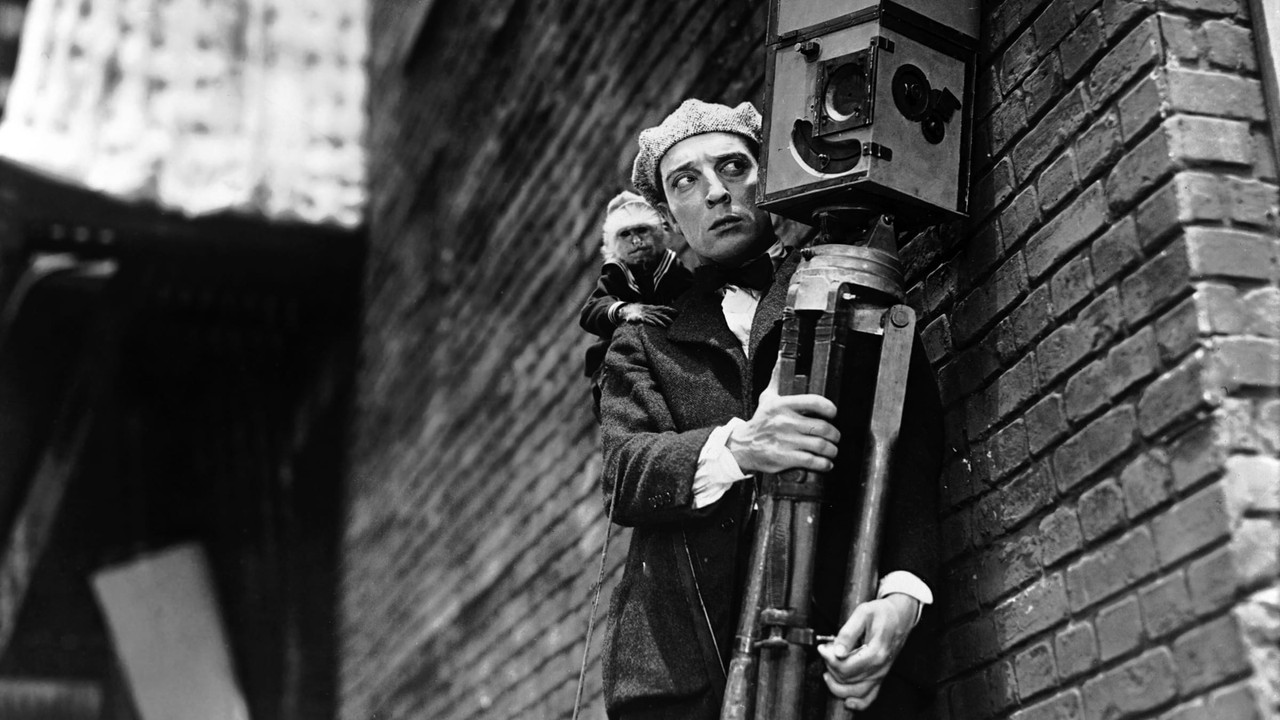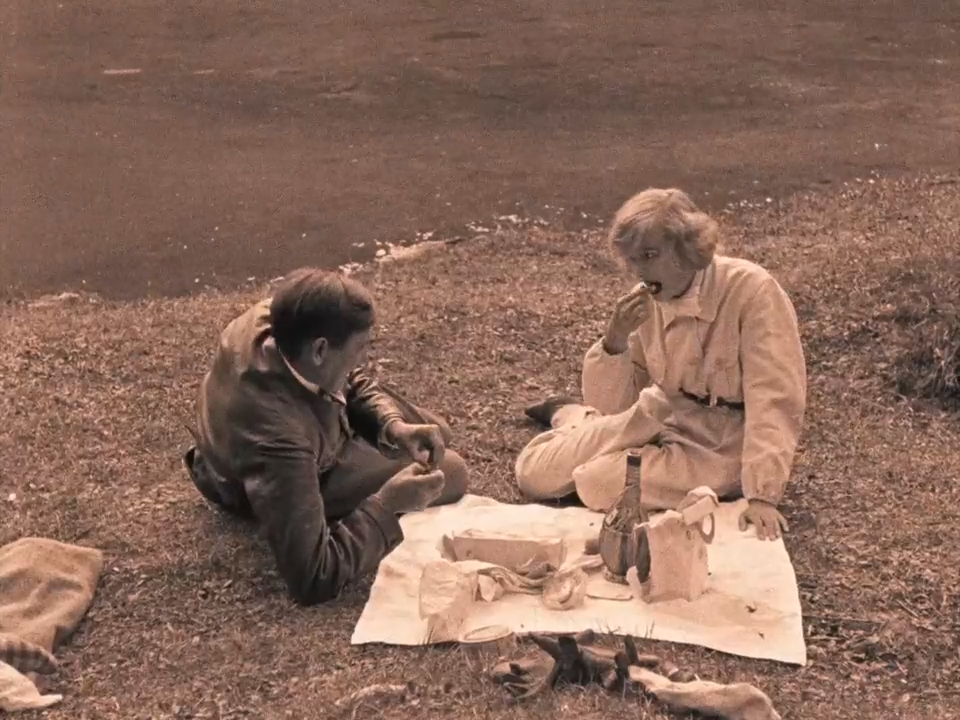“What a lucky clown you are! You don't have to wipe off your laugh.”The Man Who Laughs (Paul Leni, 1928)
Jan
29
1690

A hand-painted carnival banner reading “URSUS ye Philosopher presents THE LAUGHING MAN. Don't fail to see GWYNPLAINE who was deserted at ye age of ten on ye night of ye 29th of January 1690 by ye Villainous Comprachicos on ye coast of Cornwall. This little boy has grown up and is now known as THE LAUGHING MAN”. DP: Gilbert Warrenton.
1920s
“Feast your eyes. Glut your soul on my accursed ugliness.”The Phantom of the Opera (Rupert Julian, Lon Chaney, Ernst Laemmle + Edward Sedgwick, 1925)
Jan
28
Gaslights

An enormous gaslit chandelier dangles over the Paris Opéra audience's heads. DPs: Milton Bridenbecker, Virgil Miller & Charles Van Enger.
Gaslights for the first recorded public street lighting powered by gas, demonstrated in Pall Mall, London, on 28 January, 1807. The introduction of gaslight had a major influence on theatre and opera, including the new Paris Opera (1875), which was lit by no less than 960 gas jets. Thanks to the brilliant light, stage actors could tone down their mannerisms and stage makeup.
– The Phantom
However, in the dark dungeons under the Opéra lives a pitiful creature, doomed to dwell in darkness. His makeup, provided by The Man of a Thousand Faces, Lon Chaney, was both grotesque and eerily real .
“… as we enjoy great advantages from the inventions of others, we should be glad of an opportunity to serve others by any invention of ours; and this we should do freely and generously.”Egged On (Charles R. Bowers, Harold L. Muller + Ted Sears, 1926)
Jan
17
inventions

Charley working his Rube Goldberger-esque egg-rubberizing contraption.
An invention for Benjamin Franklin's birthday. Inventor Charley (Charles R. Bowers) comes up with an ingenious method to make eggs break-proof for transport by rubberizing them.
– Benjamin Franklin in his autobiography
Bowers was an almost-forgotten silent era comedian, filmmaker, and animator. In more recent years, his groundbreaking stop-motion comedy has found a new, well-deserved, interest.
– Now, see! You kill-a de monk!
– Pay him for that baboon… or I'll run you in!The Cameraman (Edward Sedgwick + Buster Keaton, 1928)
Jan
14
National Dress Up Your Pet Day

Buster (Buster Keaton) with Josephine the monkey on his shoulder. DPs: Reggie Lanning & Elgin Lessley.
A funnily dressed pet for National Dress Up Your Pet Day (USA) (please don't!).
After cameraman Buster accidentally knocks over a monkey, he has no choice but to take the sailor-suited simian along on his movie shoots.
Die Nibelungen: Siegfried (Fritz Lang, 1924)
Jan
2
dragons

Siegfried (Paul Richter), seen from the back, bathing in the blood of the slain dragon. On his left shoulder blade, a linden leaf. DPs: Carl Hoffmann, Günther Rittau & Walter Ruttmann.
Dragons or lizards, January's soul symbol.
Alan “How long will I live?” Cesare “Till the break of dawn.”Das Cabinet des Dr. Caligari [The Cabinet of Dr. Caligari] (Robert Wiene, 1920)
Dec
25
Hanukkah + Christmas


Cesare (Conrad Veidt) escapes with Jane (Lil Dagover) in his arms. Composition and distribution of light and shadow – much of which was painted directly on the set pieces – strike a strong resemblance with the oldest known survived photograph by Nicéphore Niépce from ca. 1822 – 1827. DP: Willy Hameister.
A favourite scene featuring light for Hanukkah and Christmas.
“I hate to see the evening' sun go down
I hate to see the evening' sun go down
It makes me think I'm on my last go 'round Feeling' tomorrow like I feel today
Feeling' tomorrow like I feel today
I'll pack my grip and make my getaway” Saint Louis woman with her diamond rings
Pulls that man around by her apron strings
Wasn't for powder and the store-bought hair
The man I love wouldn't go nowhere, nowhere I got them Saint Louis Blues; just as blue as I can be
He's got a heart like a rock cast in the sea
Or else he wouldn't have gone so far from me”St. Louis Blues (Dudley Murphy, 1929)
Dec
20
Walter “Wolfman” Washington – 1943

Bessie “the Empress of Blues” Smith, singing her blues away. DP: Walter Strenge .
Featuring rhythm and blues, funk or blues, for Walter “Wolfman” Washington's birthday (1943)
– Bessie Smith, St. Louis Blues (W. C. Handy)
The Monkey Talks (Raoul Walsh, 1927)
Dec
14
Monkey Day

Jocko (Jacques Lerner) in embrace with his Olivette (Olive Borden). Amazingly, Lerner does not wear a mask; it's all the work of makeup craftsman Jack Pierce. DP: L. William O'Connell.
A monkey for (unofficial) Monkey Day.
“When a boy loses his job, buys a new suit and takes a girl to Coney Island, he's either insane or in love – – and there's not much difference.”Speedy (Ted Wilde, 1928)
Dec
7
National Cotton Candy Day


Harold 'Speedy' Swift (Harold Lloyd ) and his gal Jane (Ann Christy) enjoy big bags of cotton candy at the fair. DP: Walter Lundin .
Cotton candy for (National) Cotton Candy Day. Gifs via Little Horror Shop on Tumblr.
– title card
Mit dem Motorrad über die Wolken [A Motorcycle Trip Among the Clouds] (Lothar Rübelt, 1926)
Jan
9
roadside picnic

A man and woman (Signorina Hansi) in 1920s motorcycle outfits enjoy a cheese-and-wine picnic at the Waldsee. DP: Franz Sochor.